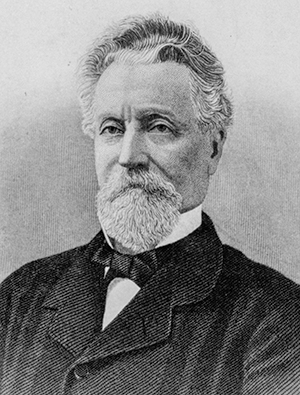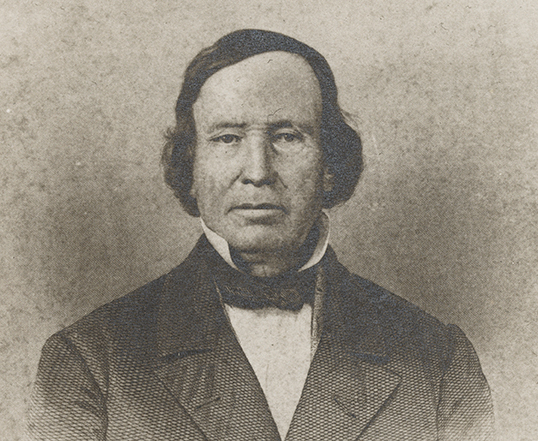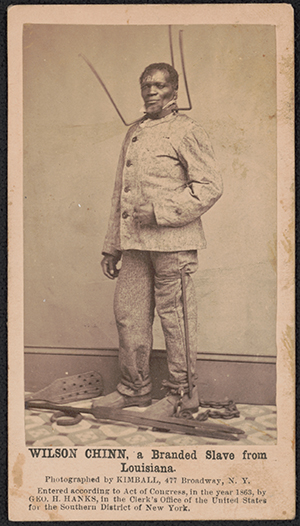IRISH SUGAR PLANTERS IN ANTEBELLUM LOUISIANA
Published in Features, Issue 2 (March/April 2022), Volume 30By Joe Regan
In 1817 Hugh Quin bade farewell to Portaferry, Co. Down, and emigrated to the US, sailing from Liverpool to New Orleans. The fleet of ships that conveyed US cotton to Liverpool avoided returning ‘in ballast’ (not carrying any cargo) by taking immigrants back to New Orleans. Contemporary observers noted the relationship between cotton and cheap passage to New Orleans, noting that thousands of Irish immigrants had ‘gone out in cotton ships to New Orleans, and ascended the Mississippi’.
BOOM IN LOUISIANA’S SUGAR PRODUCTION
By December 1817 Quin had arrived in New Orleans. He soon toured the sugar plantations below the city. He found sugar cane ‘6 to 8 feet high from 3½ to 5 inches in circumference and was planted in rows from a foot and half to two feet apart’. He observed ‘40 negroes of both sexes’ cutting the cane:
‘Each had a large knife for this purpose with which he looped off the tops and Branches, then cut the cane by the ground which looked something like our kail [sic] or cabbage stocks and then threw it behind them. They were then gathered into heaps by little negroes and drawn by a team of oxen to the mill.’
Quin followed the cart to the sugar mill, where he saw ‘a large wheel, turned by 8 horses, which put 3 large metal cylinders in motion’ to crush the cane. Whilst viewing the crushing, he noticed a ‘large Axe’ and enquired about its use. The overseer’s response made Quin’s ‘heart tremble’. The axe ‘was used to cut off the arm of the Negro when drawn in between the cylinders which not unfrequently occurs whilst they furnish the cane!! … could we but know what the poor Negroes endure before we can have a pound of sugar we would not be so cheerful over a cup of Tea’. Increasingly part of the standard labourer’s diet, the demand for crystalline sugar triggered a boom for sucrose between the 1820s and the eve of the American Civil War. By 1831 every American consumed thirteen pounds of sugar each year, and by mid-century per capita consumption surpassed 30 pounds. This increased demand resulted in a surge of investment in Louisiana’s sugar industry. As a result, the enslaved population of Louisiana’s sugar plantations rose from 36,000 in 1830 to 125,000 by 1850. Steam-powered sugar mills replaced the horse-powered mills’ plodding pace with an industrial order that advanced relentlessly. By 1853 Louisiana was producing a quarter of the world’s exportable sugar. In antebellum Louisiana there were wealthy Irish immigrant families who made immense fortunes from cotton but also from sugar.
NEW ORLEANS SECOND ONLY TO NEW YORK

Above: Edward Sparrow, c. 1870s. Born in Dublin in 1810, by 1860 he had real and personal property valued at $1,248,000, making him one of the wealthiest men in the US, with a total of 392 slaves producing cotton. Sparrow was an advocate of secession and was elected as a representative to the Provisional Confederate Congress (1861–2), where he was involved in drafting the Confederate constitution. He served as a Confederate senator for the remainder of the American Civil War. (Louisiana State University Libraries)
As a merchant class, Irish families had flourished in late colonial New Orleans. Spanish Louisiana offered Irish immigrants the opportunity to become prosperous landowners, enslavers and merchants. Irish immigrants travelled to the Gulf Coast, and especially New Orleans, in considerable numbers. For example, Irish natives constituted about 17% of the New Orleans white population of 2,065 in 1791. These colonial immigrants established Irish ties to the institution of slavery in the lower Mississippi River valley. Irish enslavers thus became a minor but enduring feature of US slavery. Louisiana advanced from being a recently acquired US territory in 1803 to the primary commercial market of the US South in the 1820s. From 1834 to 1844 New Orleans was the most dynamic port in the US, and by 1850 it was second only to New York as an entrepôt for foreign immigrants.
Expanding commercial opportunities attracted many newcomers, and the population of New Orleans swelled exponentially during the antebellum period. Those who arrived with capital and material resources quickly enjoyed economic success. In 1822 this fact was noted by Robert Givin in New Orleans, who in a letter back to his family in Ireland stated that with a ‘little start in this Country a man can make money with Economy which puts him from hard work in a warm climate like this but when he has to depend on his weekly wages together with paying high for Boarding Clothing & he can Realize but little’. By 1860 over 86% of Louisiana’s Irish population resided in the city, accounting for 24,398 of its inhabitants or 15.5% of the city’s total population. The profits extracted from slavery in New Orleans created the possibility for some Irish immigrants to accumulate immense wealth. Irish enslavers were immigrants who took advantage of enslaved people. Indeed, these Irish families took to owning slaves quite easily, regardless of their religious background. They were confident in their innate whiteness and their ability to operate plantations. Only a few Irish immigrants achieved élite enslaver status, and they enjoyed wealth and influence that few in antebellum society could imagine.
MAUNSEL WHITE
The large sugar planters constructed their plantation empires through various means. Some inherited their wealth, while others utilised advantageous marriages, capital levied from mercantile and banking enterprises, good fortune and skulduggery to achieve their wealth. Successful merchants in the antebellum South often pursued careers as planters after establishing their urban enterprises. Sugar planting was the most common attraction for New Orleans merchants, as the proximity of sugar lands to the city allowed them to monitor their interests there. Prominent Irish merchants in New Orleans invested their profits in lands and slaves. Maunsel White and John Burnside were two of the most dominant businessmen in the Crescent City, and both became sugar planters.

Above: Maunsel White—he was unwavering in his commitment to slavery as the ideal labour system for the South, believing that ‘the slavery of the Negroes all in the South was a blessing to them’. (Wilson Library, University of North Carolina)
In 1844 White recalled how ‘I left my native country—Ireland—at an early age having had the misfortune to lose both parents when only six years old’. He regretted that ‘my knowledge of our family is quite limited’, but recalled that his mother’s relations were ‘Bankers, formally in Limerick’, whom he had visited when he was thirteen, the same year ‘I left for this country’. In 1801 White arrived in New Orleans, having travelled from Ohio on a flatboat. He commenced work as a clerk and quickly learned the commission business. By 1808 he was operating his own commission enterprise. During the war of 1812 he commanded a battalion of uniformed volunteer soldiers, the Louisiana Blues, and served under Andrew Jackson at the battle of New Orleans. White became acquainted with Jackson and the two became friends. White served as Jackson’s cotton factor in New Orleans but made his initial fortune in land speculation. Maunsel White’s commercial endeavours ensured that he was for nearly half a century among the most respectable merchants in New Orleans, so that ‘in the zenith of its prosperity, no house was wider known throughout the valley of the Mississippi … The result of this prosperous commerce was the accumulation of an immense estate, reaching, at one period, nearly two million dollars.’ White branched into sugar production, and his operation centred on his Deer Range plantation in Plaquemines parish. In 1858 De Bow’s Review, the state’s leading agricultural journal, reported that he was ‘one of the largest sugar planters of Louisiana … It is in the highest state of improvement and has upon it about two hundred slaves.’
JOHN BURNSIDE

Above: The Houmas plantation mansion, Ascension parish, Louisiana, in 1936—once owned by John Burnside. (Library of Congress)
Dublin-born journalist William Howard Russell was astonished by the size of some of the sugar plantations:
‘If an English agriculturist could see six thousand acres of the finest land in one field, unbroken by hedge or boundary, and covered with the most magnificent crops of tasseling Indian corn and sprouting sugar-cane, as level as a billiard table, he would surely doubt his senses. But here is literally such a sight—six thousand acres, better tilled than the finest patch in all the Lothians, green as Meath pastures.’
The impressive lands that Russell described belonged to John Burnside, ‘formerly of Hillsborough near Belfast’. Russell remarked how Burnside had left Ireland ‘in early youth, poor and unfriended to seek his fortune and indeed scarcely knowing what fortune meant’. Burnside became one of the leading commercial figures of New Orleans, and he conducted extensive business throughout the South, making huge profits from advancing credit to planters. In 1859 Burnside’s plantations produced 3,060 hogsheads of sugar, a crop that would have grossed at least $225,000. By 1860 he owned thirteen plantations in Ascension and Saint James parish. At the age of 50, Burnside was the wealthiest man in Louisiana, having real and personal property valued at $2,600,000 by 1860. On the eve of the Civil War he was the largest enslaver in the state of Louisiana and the third largest in the entire US, owning 939 enslaved people. Burnside’s plantations produced, on average, 4,000 hogsheads of sugar per year, and his 1861 crop of 7,652 hogsheads was the largest ever recorded in antebellum Louisiana.
Élite planters such as Burnside developed networks of roads and railroads on their landholdings to improve the ease and speed of transportation of their sugar crops to the mills. Sugar planters sought the most high-tech equipment that their money could buy. Louisiana’s Irish sugar planters experimented and applied steam power to their advantage. Richard Follett has skilfully chronicled the advent of technological developments on Louisiana’s sugar plantations, where the use of ‘steam-powered sugar mills, drilled gang work, modern assembly-line techniques and disciplined clock-ordered management’ contributed to an increasing capitalist slave mode of production. Technological improvements created a greater demand for finer and whiter refined sugar, which resulted in planters adopting the vacuum processing method. Vacuum pans evaporated the sugar juice in sealed units and produced a sugar of superior quality than the old open kettles. Maunsel White believed that vacuum-produced sugar was a ‘fancy article’ that commanded a better price. The planters of southern Louisiana perfected the process of granulating sugar in a climate that demanded careful attention and as much time as possible in the fields to ripen before the arrival of the winter frosts.
IRON DISCIPLINE

Above: ‘WILSON CHINN, a Branded Slave from Louisiana’—this 1863 photograph shows a former slave with forehead branded with the initials of his owner, Volsey B. Marmillion, wearing a punishment collar like the ones used by Maunsel White and other enslavers. (Library of Congress)
The harvest season on sugar plantations was an intense and frenetic period in which speed was essential to prevent the recently cut cane from deteriorating owing to the oxidisation that ruined the cane juice. Stability in the labour force was vital. Irish sugar planters, like their American counterparts, ruled over their enslaved people with iron discipline. Irish enslavers accepted violence against enslaved people as a natural part of the social order of the antebellum US South. For example, Maunsel White accepted slavery as an ‘immutable’ part of nature and he ensured that his enslaved workforce faced strict discipline. In 1850 Albert Patterson was born into slavery and was legally owned by Maunsel White. Patterson recalled how ‘De Frenchmen an’ de Dutchmen were mean, but the Irishmen was good. I see de blood cut out o’ n*****s … but not Col. White. He not cruel, he wouldn’t whip.’ White did, however, whip his slaves; for example, in 1856 he noted how an enslaved woman, named Caty, ‘by my own hand got a pretty good whipping for wilful lieing [sic]’. Indeed, White was happy to congratulate his overseer for his violent actions: ‘I notice what you say of the Negroes and I am indeed glad that you have got them “straightened up”. Ironing and whipping a little, has made a great change in Talus.’ Patterson may have forgotten White’s use of the whip, but his practice of ‘ironing’ left a searing mark on his childhood memories. He recollected how White:
‘… had a iron band, he’d rivet to go around the anckle, an’ he had a iron band to go around the neck, with a piece o’ iron standin’ up in de front, de back an’ each side, yo’ had to hold yo’ head jes’ so, an’ yo’ couldn’t lay down, an’ yo’ had to pad that iron band, ‘cause it was so heavy it would cut yo’ neck.’
Violence was inherent in the plantation system, and the foundation of Southern wealth rested on the bodies of the enslaved. In 1861 William Howard Russell was convinced that ‘nothing but “involuntary servitude” could go through the toil and suffering required to produce sugar’. On the Houmas plantation of John Burnside, Russell noted how the slaves were put to work and ‘moved off in silence from point to point, like a corps d’armée of some despotic emperor manoeuvring the battlefield’. Total control of labour is what enslavers sought.
Louisiana’s sugar plantations generated vast wealth and left in their wake a devastating trail of slave deaths. Slavery made financial sense for Irish immigrants who could afford it, and its potential profits attracted many speculators. Irish immigrants who invested in the institution of slavery did so intending to reap handsome returns. The profits extracted from slavery created the opportunity for some Irish immigrants to enter the ranks of the wealthiest families, not only in the US but in the industrialised world. In Louisiana, Irish enslavers found that their wealth bridged any religious or cultural differences with those native-born. Large Irish enslavers may have been few in number, yet they are not insignificant. They add an ethnic dimension to the history of US slavery and a Southern dimension that complicates visions of Irish-American history.
Joe Regan is a history Ph.D graduate of the NUI, Galway.
Further reading
R. Follett, The sugar masters: planters and slaves in Louisiana’s cane world, 1820–1860 (Baton Rouge, 2005).
D.T. Gleeson, The Irish in the South, 1815–1877 (Chapel Hill, 2001).
J. Regan, ‘The large Irish enslavers of antebellum Louisiana’, American Nineteenth Century History (December 2020).
















